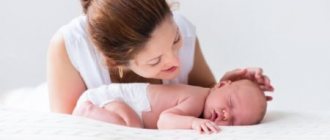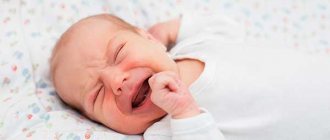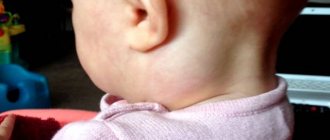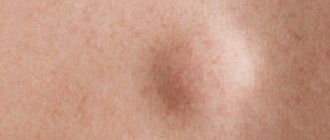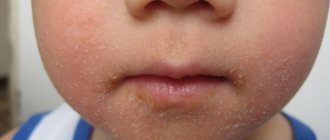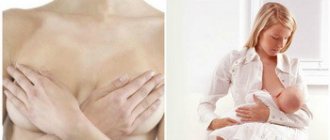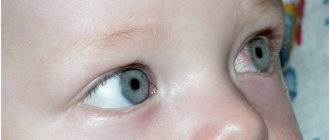Why do children hold their breath in their sleep and what to do about it
Parents of a child, especially a baby, are often worried about his development and adaptation to the world around him. Some baby reactions are different from adults. It happens that sometimes a child holds his breath for several seconds while sleeping. An attentive mother will definitely notice it and may be very afraid for the child’s health. Should we be afraid? What are the reasons for this condition of the baby?
Symptoms of the disease
In order to promptly detect and eliminate nocturnal breathing pauses in infants, parents need to monitor the quality of rest and sleep behavior. In addition, knowledge of symptoms will help to identify the problem in a timely manner, namely:
- during a sound sleep, the child holds his breath for more than 10 seconds;
- snoring appeared;
- the baby breathes through his mouth;
- Anxious behavior is observed during sleep;
- there is strong sweating;
- periodically during the daytime the baby complains of a headache;
- developmental delay.
Important: The first sign of an attack is the child’s face and fingertips turning blue. In addition, there is a weakening of muscle tone, and the pulse gradually slows down.
During an attack of apnea in newborns, hypoxia occurs. This provokes waking up. In addition, older children may become frightened due to the release of adrenaline into the blood. Against this background, appetite may worsen and developmental delay may occur.
Reasons for holding your breath
Periodic breathing most often occurs in children under 6 months of age. For them, this is considered normal and does not require medical intervention. As much as 5–10% of the time a child spends sleeping may occur during such pauses.
Uneven breathing during sleep may have objective reasons:
- Oxygen deficiency. Blueness of the limbs, skin around the mouth or on the body appears. Most often it occurs in children under 1 year of age. Symptoms: the child gasps for air and cannot take a deep breath.
- Infectious diseases. Whistling, loud snoring, gurgling are added. Inflammation of the lungs is often accompanied by an increase in the rhythm, its acceleration.
- An erratic rhythm combined with shortness of breath indicates that the child has an elevated body temperature. Shortness of breath can also occur with heart problems.
- False croup and bronchitis with obstruction. Symptoms: lost rhythm, noisy exhalation, cough.
What to do if the child begins to choke?
If your child is coughing, he should be encouraged to continue coughing. Trying to help your child in any other way may push the object deeper into the throat. However, if the child cannot breathe, it means that the object has completely blocked the child's airway and immediate action is necessary. You should call emergency services as soon as possible.
If your child is under 1 year old, you can do the following:
- Place the child face down on the adult's arm so that the head is lower than the body. Make sure the baby's head is supported and in a safe position. Avoid putting pressure on the baby's back or neck.
- Using the palm of your other hand, deliver five strong blows between your shoulder blades. The spanking should be strong enough to help dislodge the object from the child's airway.
- If the object does not move, place the child on a hard surface. Place two fingers on your baby's chest at about heart level and press five times at a fast, firm pace to supply oxygen to the body.
- Continue alternating back blows and chest thrusts until help arrives.
If the child becomes unresponsive or unconscious, you need to focus on providing oxygen to the child's body and do the following:
- Place your baby on his back on a firm, flat surface with his head and neck in a neutral position.
- Place two fingers in the center of the baby's chest and apply firm pressure. Repeat 30 times at a speed of about 100 thrusts per minute.
- After 30 chest thrusts, check to see if the object comes out. If not, give the child oxygen. Breathe lightly into your baby's mouth twice.
- Alternate between 30 pushes and two breaths until help arrives.
Types of breath holding in children
There are two types of periodic breathing depending on the symptoms:
- Cyanoid. Symptoms are a sudden stop in breathing, rapid spread of cyanosis to the limbs and face, the color of the skin can be from pale blue to deep purple.
- The second option often goes unnoticed by parents because it causes paleness. There is a sharp outflow of blood from the skin. The child may even lose consciousness in his sleep.
These symptoms may include seizures. Muscle tone also increases. Since periodic breathing occurs during sleep, the child cannot influence the situation.
Treatment of pathology in children of different ages
Sleep disordered breathing is a serious pathology; sleep apnea is especially dangerous if it occurs in children under one year of age. During this period, the child’s body is actively growing, the brain is developing, skills and abilities are acquired daily. With a constant lack of oxygen, hypoxia occurs, which leads to the death of neurons.
Treatment of apnea begins after examination by an otolaryngologist and surgeon, a thorough diagnosis of the functioning of the central nervous system. Depending on the type of syndrome, conservative therapy using drops, sprays, tablets or surgery is prescribed.
Reason for urgent consultation with a doctor
A child with sleep apnea should be under parental supervision at all times. Temporary episodes can develop into complete interruption of breathing. In this case, it is necessary to urgently provide first aid and call an ambulance team. Alarming symptoms of deterioration:
- pallor, cyanosis of the skin and mucous membranes;
- epileptic seizure, convulsions;
- pulse rate less than 90 beats per minute;
- unnatural posture;
- lack of reaction to what is happening.
To prevent such a serious condition and death, consult a doctor in a timely manner. Short-term cessation of breathing should not exceed 10 seconds in duration; the episode itself does not repeat more than 2-3 times per night.
Quick help for a baby at home
When breathing stops completely, brain cells die after 6 minutes. These damages are irreversible, and in the absence of emergency assistance, death occurs. Therefore, if alarming symptoms appear, immediately call a team of doctors. Before their arrival, the following manipulations must be done:
- Try to wake up and bring the child to his senses.
- Spray your forehead, arms and legs with cold water.
- Give artificial respiration. Tilt your baby's head back, close his nose and gently inhale mouth to mouth. The procedure should last no more than 2 seconds, since a child’s lungs are much smaller than those of an adult.
If a rash or Quincke's edema appears, antihistamines should be given as quickly as possible. The most effective, based on reviews from parents and doctors, is Fenistil. Drops are given from the second month of birth.
As a last resort, before the ambulance arrives, a closed heart massage is performed. During these procedures, be sure to open the child’s mouth and hold his tongue so that the baby does not choke.
Modern methods of eliminating apnea in children
Many techniques have been developed to treat apnea. Their main task is to remove pathological symptoms and restore breathing as soon as possible. Depending on the cause of sleep disturbance, the following therapy is prescribed:
- Taking medications. If the cause of uneven breathing is respiratory diseases, antiviral drugs are prescribed. To increase the tone of the palate and uvula, and eliminate complete closure of the walls of the larynx, antispasmodics are taken. To reduce allergic swelling - antiallergenic drugs. With the help of medications, apnea is treated, caused by disruption of the central nervous system.
- Physiotherapy. For the obstructive type of apnea, inhalations and treatment with special devices that regulate the flow, pressure, and humidity of the air are prescribed. For newborns, stimulation of the respiratory center or artificial ventilation is performed.
- Surgical intervention. Prescribed for enlarged adenoids, tonsils, the presence of polyps in the nasal passages, congenital or acquired pathologies of the skull.
If apnea is a consequence of obesity or food allergies, the child is prescribed a special diet. To normalize weight, it is necessary to undergo a massage course and perform exercise therapy daily, depending on age.
Complications of frequent sleep apnea
This condition occurs most often in children under the age of 2–5 years. By the age of 4, in more than half of children, all signs disappear. In 17%, symptoms may occur occasionally even in adulthood.
The most dangerous condition, especially for newborns and infants, is apnea - a sudden stop in breathing during sleep. The disease manifests itself in blue skin (especially around the mouth and nose), disruption of the heart, and oxygen starvation. Most often it affects premature babies, whose respiratory centers in the brain are not fully formed. Heredity, birth injuries, complications during the mother’s pregnancy, and infectious diseases also matter.
Doctors define sleep apnea as episodes of sleep interruption for more than 10 seconds and with a frequency of at least 15 times per hour. OSA (obstructive sleep apnea) occurs in approximately 2% of children. Most often occurs after 2 years of age. The causes may be diabetes mellitus, pathologies of the ENT organs, neuromuscular disorders, GERD, and arterial hypertension. Apnea is especially dangerous for infants and newborns - the disease can lead to sudden death of the baby.
Treatment
If the baby was born at 28-37 weeks, then he is placed in a special incubator located in the maternity hospital. There, suitable conditions are created for such children, which are as similar as possible to those in the womb. They are monitored around the clock by medical staff, and special equipment records all changes occurring in the babies’ bodies. With their help, interruption of breathing during sleep in a child is also determined.
One method is oxygen inhalation
The following methods are used to treat apnea in children.
- Tactile stimulation technique. During an attack, the baby's heels, ears, fingers are massaged, and fingers are run along the back along the spine. Some hospitals are equipped with special incubators that have a vibration system.
- IVL (artificial pulmonary ventilation). Characterized by artificial inhalation of air into the lungs. Prescribed when episodes of apnea last for a very long time.
- Oxygen inhalation, or oxygen therapy. The technique is used for oxygen starvation that develops during an attack of apnea.
- CPAP therapy. It is considered a secondary treatment method. With its help, breathing is normalized during sleep.
If breathing is delayed during sleep in preschoolers and school-age children, then doctors prefer to delay treatment, that is, resort to wait-and-see tactics (since as the bones grow, the opening in the respiratory passages increases).
If the diagnosis is confirmed, then treatment begins with eliminating the obstruction and the causes that caused this condition.
In rare cases, doctors resort to surgery. The type of surgery will depend on what caused the apnea.
- Tonsillectomy. Removal of hypertrophied tonsils.
- Correction of a deviated nasal septum.
- Adenoidectomy. Removal of adenoids.
After the operation, breathing is re-evaluated approximately one month later.
Apnea Treatment Methods
The most common cause of apnea in children 2–7 years of age is chronic tonsillitis or adenoiditis, so surgery to remove the tonsils may be recommended. If the cause is impaired nasal breathing (for example, allergic or chronic rhinitis), symptomatic treatment is indicated: rinsing the nasal passages, using vasoconstrictor drugs. An abnormal development of the nose or jaw can also lead to apnea. In this case, surgical correction or wearing special devices while sleeping is used.
SINAP therapy is indicated for newborns and infants for moderate or severe apnea. Its essence is to put on an oxygen mask for the child before going to bed, which is connected with a hose to an air supply apparatus. In this case, respiratory arrests in children during sleep are excluded.
It is important to know what parents should do if they find a child who is not breathing. Be sure to wake him up, just very carefully. If the skin begins to turn blue, call an ambulance. If the child does not begin to breathe, it is necessary to perform cardiopulmonary resuscitation until the ambulance arrives. Any pause in breathing for more than 10–15 seconds should be a reason to urgently go to the hospital.
Holding your breath cannot be ignored. Constant disruption of the breathing rhythm leads to oxygen starvation, delayed mental and physical development, constant fatigue, drowsiness, and hyperactivity.
Apnea syndrome is even more dangerous. The baby can hold his breath even for half a minute. This condition in infancy can be fatal. The situation is complicated by the fact that everything happens in a dream and parents cannot fully control breathing. Therefore, it is worth making sure that the inconsistent rhythm is the norm and is not associated with pathology or disease.
Sleep apnea episodes: what are they?
In newborns and older children, the time interval between inhalation and exhalation may be lost during sleep. There are regular, irregular, periodic and pathological breathing, in which it is delayed from 20 seconds to 2 minutes.
Intermittent breathing during sleep in a child is a sign of sleep apnea. This feature occurs due to the lack of tone of the upper palate and uvula. After exhalation, the walls of the pharynx close, creating a barrier to oxygen entering the body.
It is important to know! An episode of sleep apnea in children of all ages is a holding of breath in which there is no movement of the chest. During the entire period of sleep, there are from 2-3 to 30 stops. At the moment, the child may wake up, spin around in the crib, shudder, scream, or even turn blue.
Prolonged apnea of up to several minutes provokes oxygen starvation of the brain, disrupting the functioning of all body systems.
Due to hypoxia, neurons die, which is why the child experiences developmental delays or psycho-emotional abnormalities. It is necessary to monitor your baby's sleep for up to a year, as there is a risk of developing sudden death syndrome. If you experience snoring, constant startling or waking up, consult your pediatrician. Apnea may develop due to a respiratory disease, which can be treated with antiviral medications and rinsing the nose.
Attention! If, in addition to regular breath-holding, the child’s skin begins to turn pale, lips and eyelids turn blue, it is necessary to urgently call an ambulance. If the oxygen flow stops, coma and death will occur within six minutes.
When choking in the throat is not considered a pathology
When symptoms of suffocation are temporary and are not considered pathology:
- Women pregnant with large fetuses or twins often experience attacks of suffocation at night.
- This occurs because the fetus puts pressure on the diaphragm, causing temporary problems.
- After childbirth, the woman’s breathing returns to normal, and nothing else bothers her.
- Sensitive people cannot tolerate heat indoors. Because of this, an attack of suffocation occurs.
- One has only to open the window, the attack passes and the person feels well.
- Some medications cause breathing problems.
- If the medicine is discontinued, the patient stops complaining of suffocation.
In all three cases, suffocation is a temporary phenomenon and is not associated with a persistent impairment of respiratory function. When favorable conditions are created, the attack of suffocation will no longer occur.
FIRST AID AND PREVENTION
Choking attacks are a serious pathology: the symptoms cannot be ignored, as complications can lead to death.
As a rule, victims are frightened, cannot sleep at night, and suffocate.
First aid for choking
It turns out depending on the cause of the attack.
The first thing to do in any case is to wake up and calm the patient, regardless of age and gender.
- If the suffocation is caused by sleep apnea, the attack will go away on its own when you wake up and the victim will feel much better.
- If breathing problems are caused by an asthma attack, you should give the person the inhaler they usually use. If there is no inhaler, call an ambulance.
- In case of cardiovascular disorders (often characterized by chest pain), we always call a doctor. Until the ambulance arrives, the patient needs to be placed in a semi-lying position and given nitroglycerin.
- In case of allergic swelling of the larynx, you need to act immediately. You need to call an ambulance and give the victim any antihistamine. If this is not the first time this situation has arisen, then there may be injection medications at home. This form of drug administration is preferable as it acts faster.
FREQUENTLY ASKED QUESTIONS ABOUT NIGHT CHOKING
Attacks of suffocation are incomprehensible and cause a feeling of fear. Therefore, patients always have many questions for their doctor. Below are the most common ones.
What to do if you suffocate in your sleep?
- First, you need to calm down. It's difficult, but you have to try.
- If there are any relatives nearby, it is better to call them for help.
- If you have a short attack of suffocation without consequences, you can go back to sleep.
- If an adult has heavy breathing during sleep, you can wake him up to do breathing exercises.
- If suffocation recurs periodically and is caused by bronchial asthma, you need to use an inhaler, which should always be at hand.
In case of a prolonged attack, you need to call an ambulance!
Can a person suffocate in deep sleep?
Asphyxia (suffocation during sleep) is extremely rare. Possible in newborns with central apnea. If you do not provide help for Quincke's edema, death is very likely.
People who are intoxicated or under the influence of drugs can suffocate in their sleep.
I am suffocating in my sleep, which doctor should I contact?
If a person almost suffocated while sleeping, the first thing you should do is visit a therapist. The doctor will decide which specialist to give the referral to.
- If asthma or COPD is suspected, a referral is made to a pulmonologist.
- Allergic reactions will be treated by an allergist.
- In some clinics you can meet an allergist-pulmonologist.
- Apnea or hypopnea is examined by somnologists.
- If the cause of the pathology is eliminated surgically, you will need to visit a surgeon.
- If suffocation is caused by cardiovascular diseases, this is a direct path to a cardiologist.
- If you have acid reflux, you will need the help of a gastroenterologist.
Whatever the cause of suffocation, you need to be careful about your health and visit a medical facility in a timely manner.
Diagnosis of breathing in babies
When parents observe cessation of breathing during sleep, show the baby to a specialist. The doctor will prescribe diagnostic measures - polysomnography. It is performed in a hospital setting for 1-3 nights. In the evening, special sensors are put on the baby, which record all the body’s reactions at the moment of rest. The result of the survey reveals the number and duration of stops.
Babies in the first year of life experience confused, irregular breathing as the body adapts to environmental conditions. Before going to the doctor, record the number of breathing movements at rest, at home. For babies, frequency is measured by counting the number of times the chest rises over sixty seconds.
Respiration rates vary:
- up to 4 weeks – 35–55 breathing movements for 60 seconds;
- up to 8 weeks – 30–46;
- up to 36 months – 25–37;
- 4–9 years – 23–33;
- 10–12 years – 17–23.
Transfer the readings obtained as a result of counting at home onto paper and show it to the pediatrician. The complex of diagnostic measures includes consultation with an otolaryngologist, neurologist, and psychotherapist to exclude diseases.

